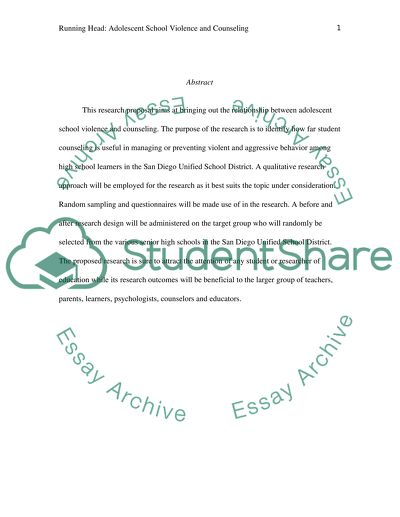Cite this document
(“Adolescent School Violence and Counseling Research Proposal”, n.d.)
Retrieved from https://studentshare.org/education/1395631-research-proposal
Retrieved from https://studentshare.org/education/1395631-research-proposal
(Adolescent School Violence and Counseling Research Proposal)
https://studentshare.org/education/1395631-research-proposal.
https://studentshare.org/education/1395631-research-proposal.
“Adolescent School Violence and Counseling Research Proposal”, n.d. https://studentshare.org/education/1395631-research-proposal.


